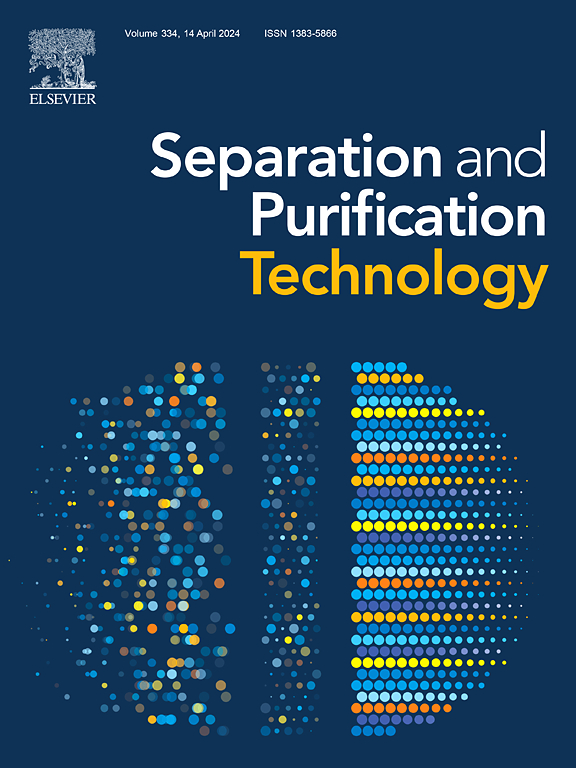Insights into the thermodynamic and kinetics of selective recovery of lithium from spent lithium-ion batteries with gypsum waste
IF 8.1
1区 工程技术
Q1 ENGINEERING, CHEMICAL
引用次数: 0
Abstract
With a purpose of selective extraction of lithium from spent lithium-ion batteries, the sulfation roasting of cathode material with gypsum waste followed by water leaching was proposed in the present study. The thermodynamics and kinetics of the sulfation roasting process were systematically studied. The activation energy, pre-exponential factor, and reaction mechanism function of the sulfation roasting reaction were determined to be 220.93 kJ/mol, 6.264 × 102, and g(α) = 1-(1-α)2/3, respectively. The optimal parameters for the sulfation roasting process were identified as a roasting temperature of 750 °C, a mass ratio of graphite, gypsum, and cathode material at 0.4:0.8:1, and a roasting duration of 60 min. Under these conditions, the Li leaching rate reached 79 %, while the leaching rates of Ni, Co, and Mn remained near 0. Li from the cathode material preferentially reacted with CaSO4 to form Li2SO4 and CaCO3, while some Li also reacted with CaCO3 to produce Li2CO3. Ni, Co, and Mn in the cathode material initially formed intermediate products such as LixNi2-xO2, LixCo1-xO, and LiMn2O4. These intermediates eventually transformed into Ni, Ni3S2, Co, MnO, and Li2CO3 in the presence of graphite.
利用废石膏从废锂离子电池中选择性回收锂的热力学和动力学见解
为了从废锂离子电池中选择性提取锂,采用石膏渣硫酸盐焙烧正极材料,然后进行水浸。对硫化焙烧过程的热力学和动力学进行了系统研究。测定了硫化焙烧反应的活化能为220.93 kJ/mol,指前因子为6.264 × 102,反应机理函数为g(α) = 1-(1-α)2/3。确定了硫酸化焙烧工艺的最佳参数为焙烧温度750 ℃,石墨、石膏和正极材料的质量比为0.4:0.8:1,焙烧时间60 min。在此条件下,锂的浸出率达到79 %,而Ni、Co、Mn的浸出率保持在0附近。正极材料中的Li优先与CaSO4反应生成Li2SO4和CaCO3,部分Li也与CaCO3反应生成Li2CO3。正极材料中的Ni、Co、Mn最初形成LixNi2-xO2、LixCo1-xO、LiMn2O4等中间产物。这些中间体在石墨的存在下最终转化为Ni、Ni3S2、Co、MnO和Li2CO3。
本文章由计算机程序翻译,如有差异,请以英文原文为准。
求助全文
约1分钟内获得全文
求助全文
来源期刊

Separation and Purification Technology
工程技术-工程:化工
CiteScore
14.00
自引率
12.80%
发文量
2347
审稿时长
43 days
期刊介绍:
Separation and Purification Technology is a premier journal committed to sharing innovative methods for separation and purification in chemical and environmental engineering, encompassing both homogeneous solutions and heterogeneous mixtures. Our scope includes the separation and/or purification of liquids, vapors, and gases, as well as carbon capture and separation techniques. However, it's important to note that methods solely intended for analytical purposes are not within the scope of the journal. Additionally, disciplines such as soil science, polymer science, and metallurgy fall outside the purview of Separation and Purification Technology. Join us in advancing the field of separation and purification methods for sustainable solutions in chemical and environmental engineering.
 求助内容:
求助内容: 应助结果提醒方式:
应助结果提醒方式:


